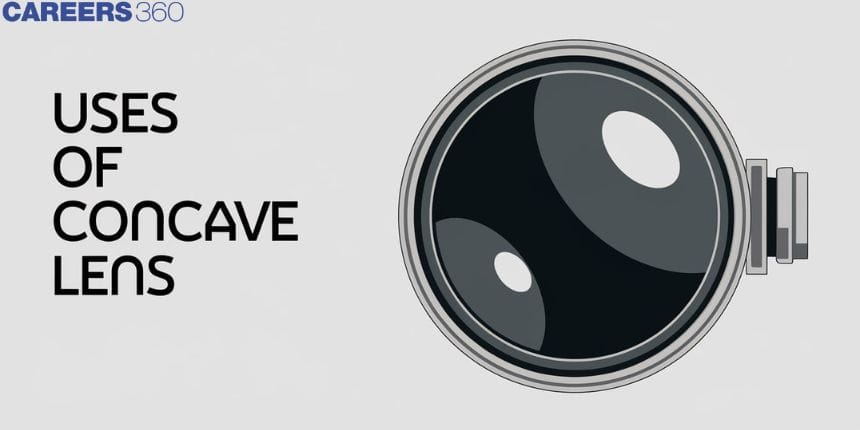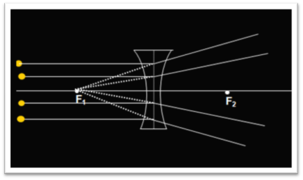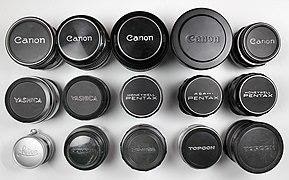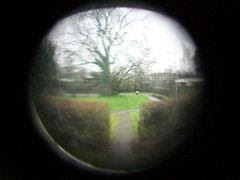Uses of Concave Lens - Definition, Examples, Uses, FAQs
Define concave lens-
A lens is an optical transmissive device that, through the process of refraction, concentrates or disperses a beam of light.
A basic lens is made out of a single piece of material that is clear in nature.
A compound lens, on the other hand, is made up of numerous simple lenses, or elements, that are normally aligned along a common axis.


Examples of uses of concave lens or concave lens examples:
A spoon's front side is curled inwards. Concave is the term for such a surface. A concave surface can also be found on the inside of a bowl. A dentist, for example, utilizes a concave mirror to see a bigger image of the teeth.
Uses of concave lenses in daily life-
- They're used in binoculars and telescopes.
- They are used as peepholes in doors.
- They're found in flashlights, cameras, and other electronic devices.
Also read -
- NCERT Solutions for Class 11 Physics
- NCERT Solutions for Class 12 Physics
- NCERT Solutions for All Subjects
Uses of concave lens in glasses-
Myopia, often known as near-sightedness, is most commonly corrected with concave lenses. Myopia is a condition in which a person's eyeball is abnormally long, causing images of distant objects to fall short of the retina. As a result, concave lenses are utilized in spectacles to compensate for the shortage by spreading light rays out before they reach the eyeball. This allows the person to see items in the distance more clearly.
Uses of concave lens in lasers-
Laser beams are used in a variety of scanners, medical equipment, and CD and DVD players. The laser beams are dispersed because they are highly focused, allowing the equipment to function effectively. Small concave lenses are used to expand the laser beam and access a specific area more precisely.
Uses of concave lens of laser in daily life-
Many of the things that we use on a daily basis contain lasers. Laser technology is used to read data from discs in consumer devices such as Blu-Ray and DVD players. In bar code scanners, lasers are utilized to process data. Many medical treatments, such as LASIK eye surgery, involve lasers.

Related Topics Link, |
Uses of concave lens in cameras-
Camera makers frequently utilize a combination of convex and concave lenses to increase the quality of their images. When a camera's primary lens is merely a convex lens, it generates chromatic aberrations, which are distortions in the photographs. The unwanted effects were avoided by combining both concave and convex lenses.

Also Read:
- NCERT solutions for Class 12 Physics Chapter 9 Ray Optics and Optical Instruments
- NCERT Exemplar Class 12 Physics Solutions Chapter 9 Ray Optics and Optical Instruments
- NCERT notes Class 12 Physics Chapter 9 Ray Optics and Optical Instruments
Uses of concave lens in flashlights-
In flashlights, concave lenses are used to magnify the light emitted by the source. On the hollowed side of the lens, light rays fall, and on the other side, light rays diverge. This expands the light source's radius, resulting in a larger beam.
Uses of concave lens in peepholes-
Peepholes, sometimes known as door viewers, are security devices that provide a 360-degree view of items outside of walls or doors. A concave lens is used to reduce the object's proportions and provide a wider view of the object or area.

Also check-
- NCERT Exemplar Class 11th Physics Solutions
- NCERT Exemplar Class 12th Physics Solutions
- NCERT Exemplar Solutions for All Subjects
NCERT Physics Notes:
Frequently Asked Questions (FAQs)
The light rays bend away (diverge) from the axis of the concave lens, making it a diverging lens. The lens has been formed in this example so that all light rays entering it parallel to its axis appear to come from the same point, F, which is the focal point of a diverging lens.
Concave lenses can be found in a variety of real-world applications of concave lens. Binoculars and telescopes are two examples. Nearsightedness can be corrected with eyeglasses.
Biconcave - A biconcave lens has concave surfaces on both sides. Diverging lenses are biconcave lenses. Plano-concave - A lens with one concave side and one Plano side. Diverging lenses are plano-concave lenses.
A concave lens is one that has at least one inwardly curving surface. Because it is a divergent lens, light rays refracted through it are stretched out. A concave lens is used to treat short-sightedness because it is thinner in the centre than at the corners (myopia).
Real images will not be produced by the concave lens. A concave lens does not produce real images because the rays going through it diverge and will never meet. Virtual images are created by diverging beams.
Uses of the concave lens are Glasses; Cameras; Flashlight; Laser and Uses of the convex lens are Magnifying glasses, eyeglasses, Microscopes.
Also Read
23 Jun'25 11:06 PM
22 Jun'25 05:03 PM
05 Feb'25 04:41 PM
30 Nov'24 01:19 PM
29 Nov'24 05:26 PM
29 Nov'24 02:40 PM
29 Nov'24 01:21 PM
28 Nov'24 04:42 PM
28 Nov'24 01:26 PM
28 Nov'24 01:21 PM